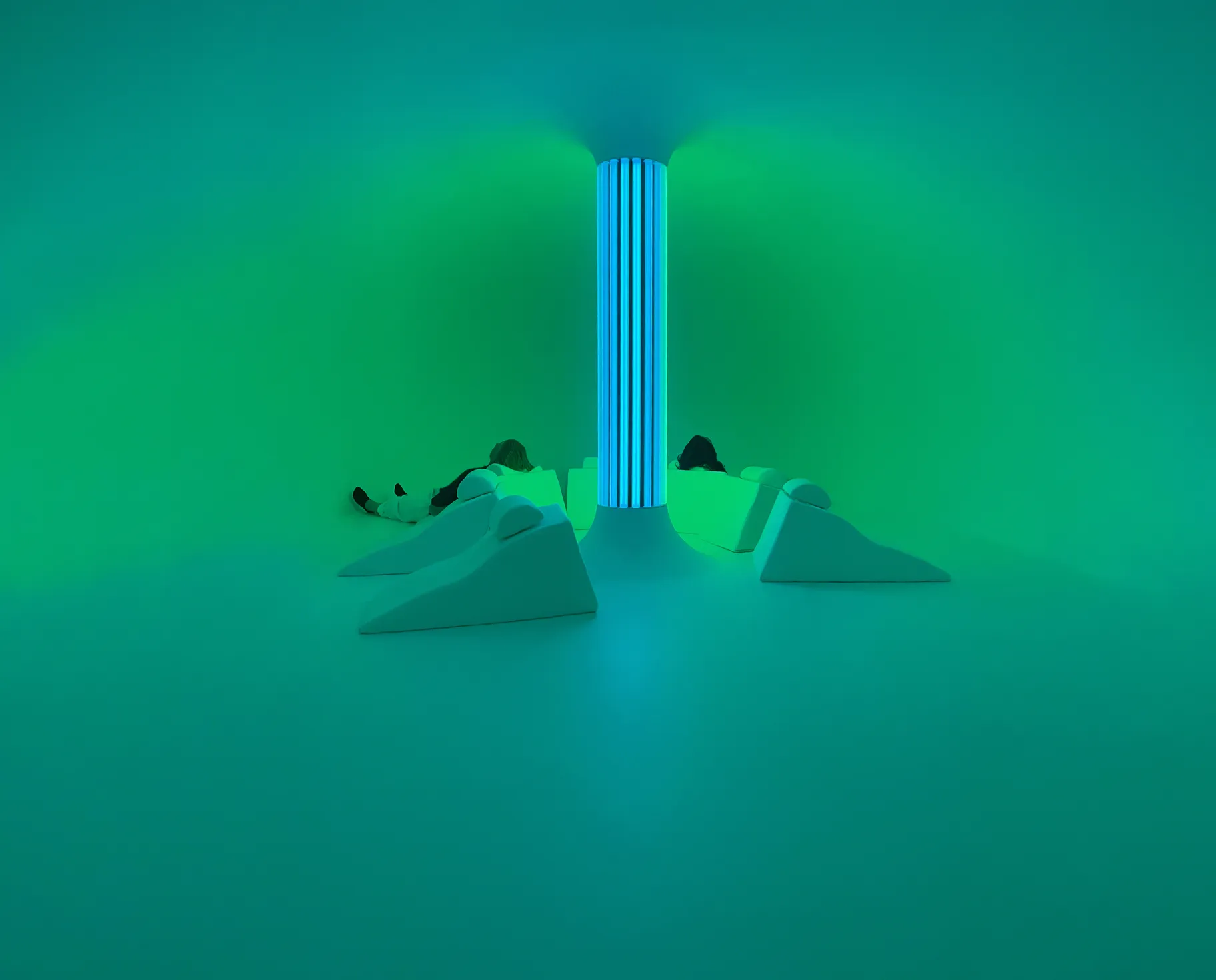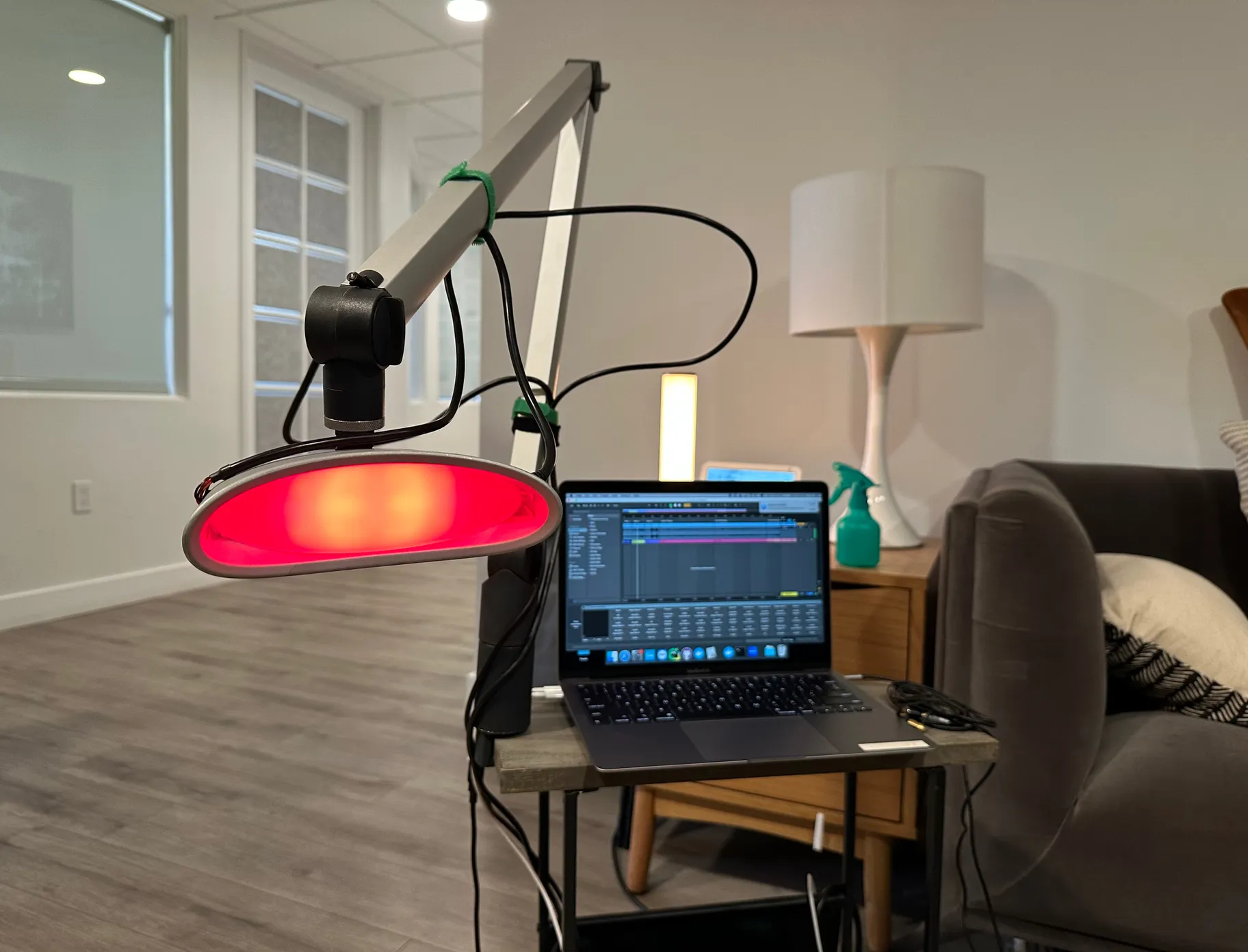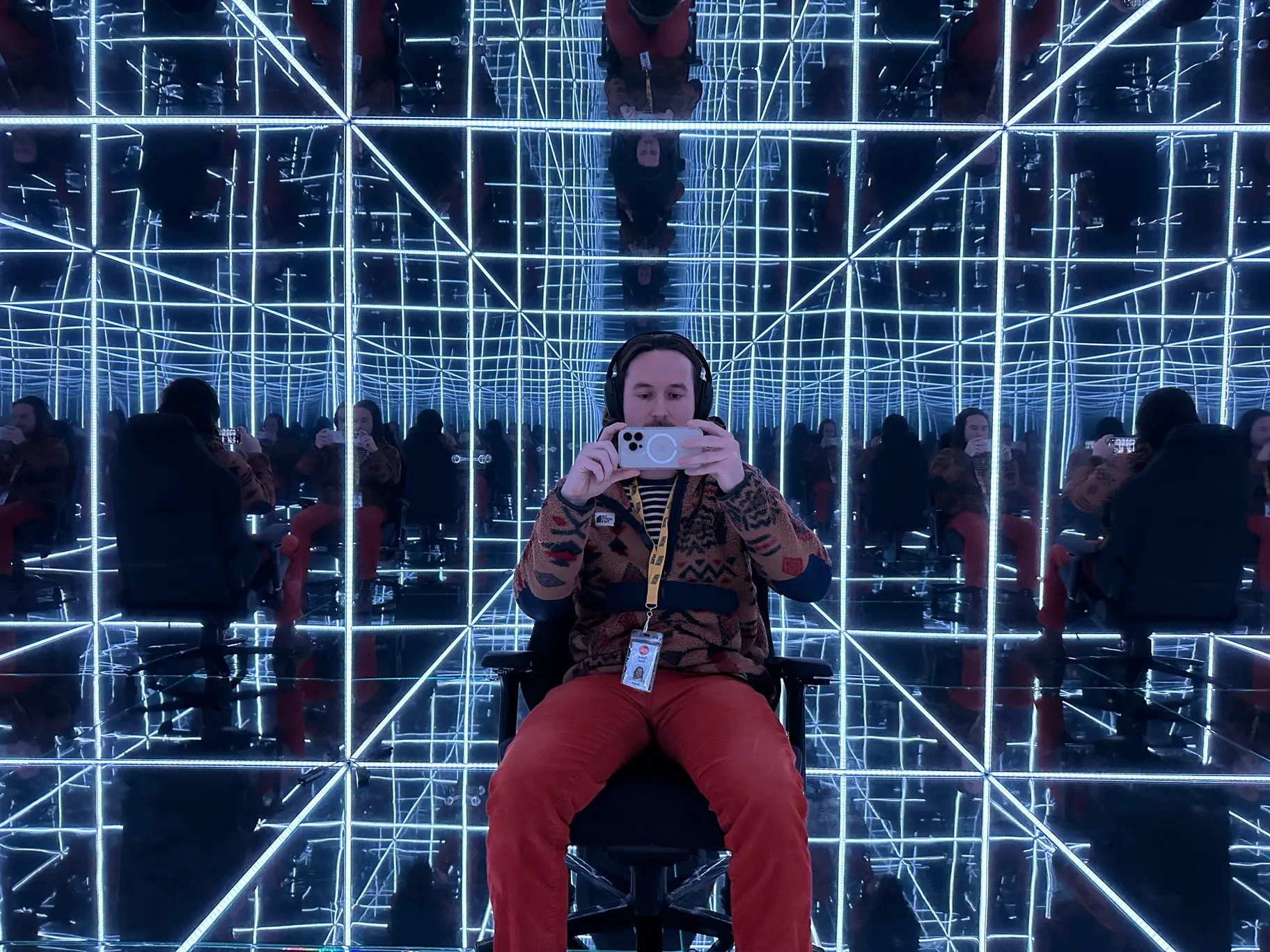In a quiet, residential part of Venice, there’s a nondescript shipping container with what looks like an oval space ship inside. Victoria Ayad is here to guide you into the space but won’t give anything away. “We usually don’t share too much about what this experience is prior to guests coming in,” she says mysteriously, “just because we wouldn't want to give them some sort of storyline or thing to feel that changes what they experience.”
A technicolor light column stretches from the floor to the ceiling of the pod, and Ayad directs you to lie on firm pillows that surround the column. The lights begin to change color in perfect synchrony with resonant tones that emanate from all around the room. There are no speakers – instead, the entire structure vibrates to amplify the sound. The experience starts off slow but becomes increasingly psychedelic, a mind-altering effect that is very much by design.
For the next half hour, you are transported to a world of synesthesia where you can hear color and see sound. Through frequency mapping, colors are transposed into sounds and vice versa. So for example, the note C might correspond to red, D to orange, and so on.
This experience is part of an art installation designed by Chromasonic, an organization which aims to impact participants on a deep level.
“Our intention is to be out in the public, for people to come in [and] get to these deeper states of connection to themselves,” says Joel Shearer, one of the sound designers behind Chromasonic. “The idea is that people can get in and get moved.”
Chromasonic is part of the “technodelic” movement, which uses art and technology to help people access altered states of consciousness. While it’s still early days, technodelics are gaining a foothold in Southern California with its unique blend of media, art, technology, and spirituality.

Chromasonic visitors lie on pillows as lights and colors evolve around them. Photo by Sam Frost.
But do these types of experiences actually work?
For this reporter, the Chromasonic sequence felt like sensory overload but in a pleasant, soothing way. The intensity of light and sound forced me out of my head and into my body. I felt the sort of awe that comes from looking at a beautiful vista and the same presence of mind I get from meditation.
My experience tracks with the responses Victoria Ayad says she regularly receives. “We've heard things like, ‘I feel like I transcended. I went to a different dimension and I came back.’ Some people have left saying, ‘I felt released from some trauma in my past, and now I feel more free. I feel more connected to my body. I feel more present. I feel calm. I feel comforted.’”
Despite using terms like “transcended to a different dimension,” the folks at Chromasonic are wary of sounding too woo-woo and recognize that some people might roll their eyes at the promise of better living through immersive art experiences. As Joel Shearer puts it, “We don't want to be too New Age-y, because … I personally would be turned off by [that]. The idea is really wanting to create these spaces that are inviting to all people … [through] removing the dogma.”
Shearer and his co-founders, visual artists Johannes and Harriet Girardoni and sound designer Orpheo McCord, want the technodelic movement to reach beyond folks with crystal collections and DMT pens. “It's not like ‘Oh, this is the hippies again.’ It's no longer the hippies,” Shearer contends. “It's all across, in many different conversations amongst lots of different communities.”
Among those communities are a growing number of scientists trying to understand how and why these experiences have an effect on people. In a high-rise Santa Monica office building less than five miles from Chromasonic, a team of renegade neuroscientists are rigorously studying technodelics. The Institute for Advanced Consciousness Studies (IACS) specializes in what senior research scientist Leonardo Christov-Moore calls “the science of transformative experience.”
According to Christov-Moore, the goal of their research is to “allow people to understand that they have the capacity to change their own deep belief structures, and help them do so.” To this end, they take a very open-minded approach. As principal investigator Nicco Reggente jokes, “Science is like the formalized f**k around and find out.”
Part technodelic booster, part BS-detector, the Institute for Advanced Consciousness Studies tests a range of devices to determine if their mind-altering promises hold up to scientific scrutiny. Among these gadgets is a so-called frisson device, which can help accentuate aesthetic chills, aka goosebumps, during a heightened emotional experience. They also recently completed a study on a stroboscopic device that employs flashing lights and music to entrain a user’s brainwaves. For example, the device uses alpha frequencies, which are correlated with relaxation, to help reduce anxiety.

The stroboscopic device from IN.TO claims to entrain users’ brainwaves using flashing lights and music. Photo by Zeke Reed.
I tried several technodelic tools at IACS, and the one I found the most personally profound is interchangeably called the Mind Gym and the Infinity Cube. The interior of the seven-foot cube is covered with mirrors and LED lights and resembles Yayoi Kusama’s Infinity Mirror Room at the Broad Museum. Participants enter and put on noise-canceling headphones before undergoing a 10-12 minute experience complete with music and narration.

Zeke Reed sits in the Mind Gym/Infinity Cube waiting for the experience to begin. Photo by Zeke Reed.
The sequence I did was narrated by actor Duncan Trussell and highlighted life’s fleeting beauty. At the risk of sounding like a spokesperson, I have to admit that I was crying tears of joy in under a minute. My time in the cube felt like a psychedelic trip, complete with all the classic insights that sound like platitudes when described after the fact: the sense of oneness, the wonder and awe, the appreciation for my existence, etc.
The folks at IACS hope that more people can have these kinds of experiences with technodelics, including those who would never touch drugs. Reggente argues that “the technodelic approach is for the masses” because it is low risk compared to something like psychedelics.
“I use the example of my mom,” he explains. “My mom would never take acid and try to work through her problems.”
